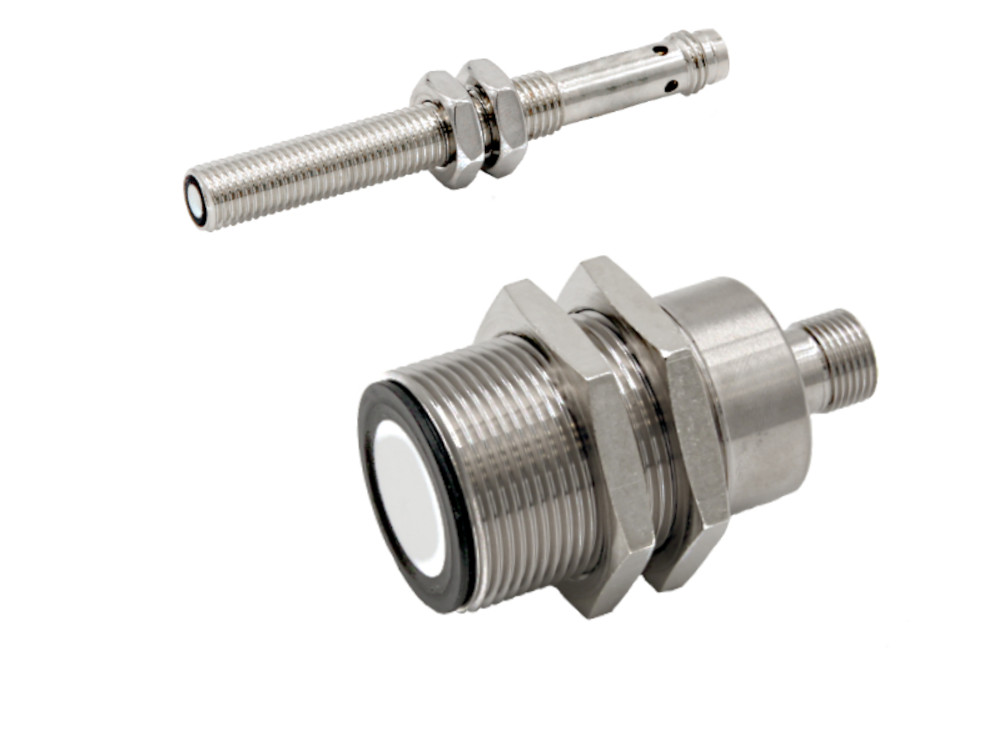
13 Jun Ultrasonic sensors with switching or analogue output
The new ultrasonic sensors are available in four different thread sizes (M8, M12, M18, M30), plus a cuboid variant and switching or analogue output. With the switching output, they can be switched between sensing and reflex operation via IO-Link. This means that the sensors can be set not only to an object to be detected, but also to a background (for example a machine part). Irregular, structured, round or sloping object surfaces in particular can deflect the signal echo of an ultrasonic scanner in such a way that it cannot function reliably. In reflex mode, this problem is solved because all deviations from the object background (object in the detection range) are reliably detected and lead to a switching behaviour. A total of three different teach modes are available, with the auto-teach mode specially developed for dynamic sensor adjustment with moving objects.
The IO-Link interface also offers intelligent additional functions such as temperature compensation that can be activated and also enables individual settings, for example the output function of the switching output, switch-on/switch-off delays and the switching hysteresis. In addition, diagnostic data is available, such as the number of switch-on processes, an operating hours counter or the minimum and maximum object distance.
Models with analogue output
The same applies to the even more versatile ultrasonic sensors with analogue output, which provide a choice of three measuring signals via IO-Link (4-20 mA, 0-20 mA or 0-10 V). In addition to the analogue output, the solutions integrate a multifunctional teach input that can be parameterised via IO-Link as a switching output, among other things. This means that all functions and setting options are available that are also offered by the sensors with switching output.
Multi-device interconnection
With synchronisation and multiplex operation of the teach input, mutual interference can be suppressed if several devices are mounted next to each other in a confined space. In these operating modes, the inputs of the units concerned are electrically connected to communicate with each other. In synchronisation mode, all sensors generate a sound pulse at the same time and synchronously and then switch to receive. In multiplex mode, on the other hand, only one sensor generates a sound pulse at a time and then switches to receive to evaluate the echo before the next sensor becomes active.
Source and photo: www.ipf.de






